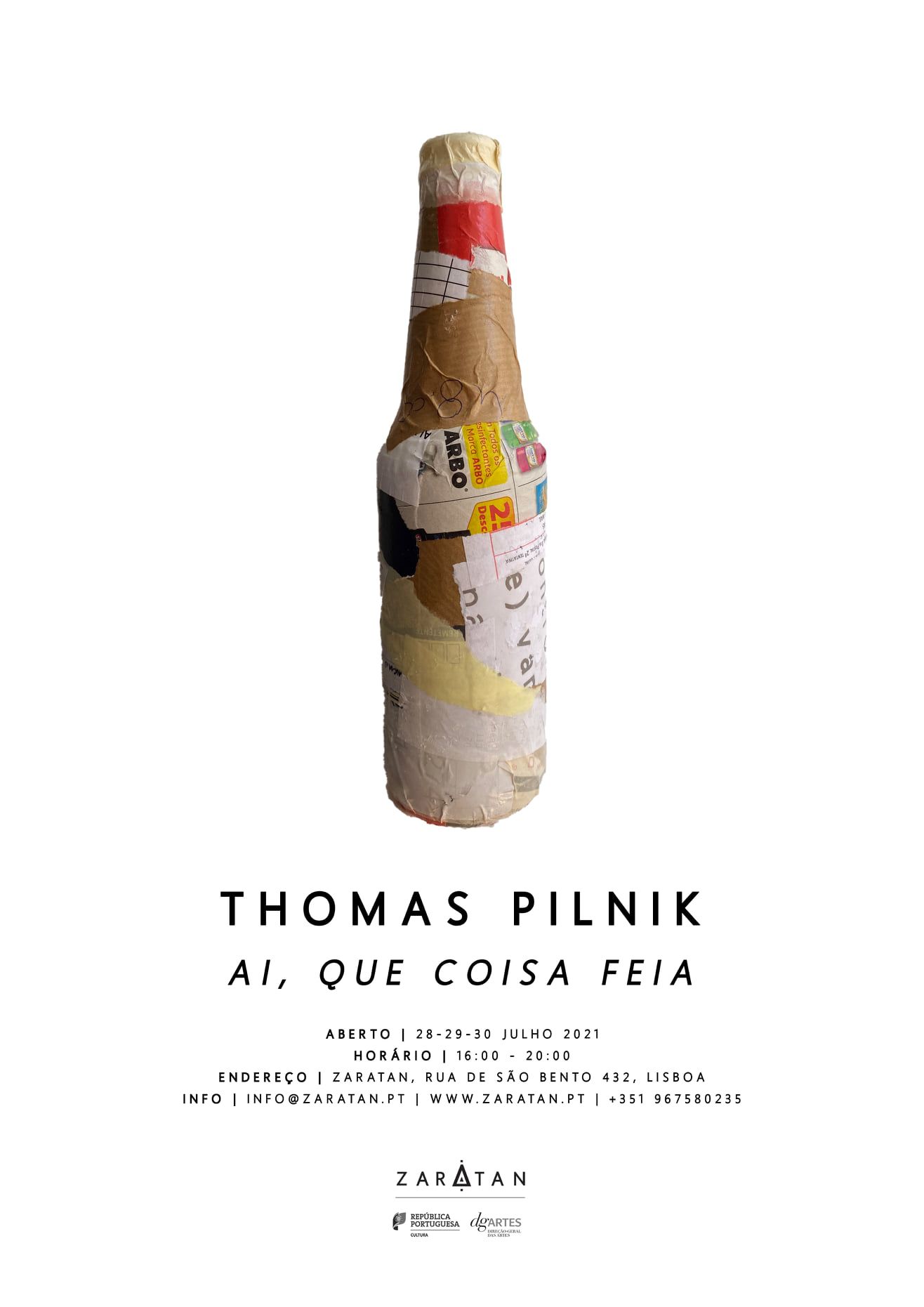THOMAS PILNIK | "Ai, Que Coisa Feia"
28 Julho 2021 16h00

Zaratan AIR | Open Studio
THOMAS PILNIK | Ai, Que Coisa Feia
THOMAS PILNIK | Ai, Que Coisa Feia
OPEN | 28-29-30 Julho, 2021
SCHEDULE | Wed-Sat, 16:00-20:00
ENTRY | Free*
SUPPORT | República Portuguesa – Cultura / Direção-Geral das Artes
INFO | residencies@zaratan.pt
SCHEDULE | Wed-Sat, 16:00-20:00
ENTRY | Free*
SUPPORT | República Portuguesa – Cultura / Direção-Geral das Artes
INFO | residencies@zaratan.pt
We are pleased to invite you to “Ai, Que Coisa Feia”, a flash exhibition by Thomas Pilnik, artist-in-residency at Zaratan AIR, who is presenting an immersive installation - part gallery, part “pop-up concept boutique”- that gets behind the adage in both its literal meaning (oh, what an ugly thing), and its metaphorical one (oh, what an ugly thing).
The piece, playful and performative in nature but uncomfortable upon further inspection, welcomes you as a participant more than it does a viewer. The work invites you to be a part of the action and lays out the red carpet only for those with the most capitalistic of intentions. This is the way of a tourist: a person welcomed into a place for their economic power, rather than their human attributes.
“Ai, Que Coisa Feia” explores the notion of sitting somewhere in the middle of tourist and local, giver and taker, ugly and beautiful, disgust and pleasure, hatred and lust and forces the present actors to occupy this grey-space to question their own reflexive decisions and disrupt their automatic assumptions of consumption, capitalism, and wastefulness.
To be a part of the piece is to consume; once you step into the shop, your eyes ingest art and your brain sends impulses through your body to touch the objects, assess their price, and initiate a transaction. And although this behavior is immediately rewarded, the aftershocks – the automatic synaptic regret often described as “buyers’ remorse” - may send shivers down your spine.
The piece, playful and performative in nature but uncomfortable upon further inspection, welcomes you as a participant more than it does a viewer. The work invites you to be a part of the action and lays out the red carpet only for those with the most capitalistic of intentions. This is the way of a tourist: a person welcomed into a place for their economic power, rather than their human attributes.
“Ai, Que Coisa Feia” explores the notion of sitting somewhere in the middle of tourist and local, giver and taker, ugly and beautiful, disgust and pleasure, hatred and lust and forces the present actors to occupy this grey-space to question their own reflexive decisions and disrupt their automatic assumptions of consumption, capitalism, and wastefulness.
To be a part of the piece is to consume; once you step into the shop, your eyes ingest art and your brain sends impulses through your body to touch the objects, assess their price, and initiate a transaction. And although this behavior is immediately rewarded, the aftershocks – the automatic synaptic regret often described as “buyers’ remorse” - may send shivers down your spine.
In other words: “To be a mass tourist, for me, is to become a pure late-date American: alien, ignorant, greedy for something you cannot ever have, disappointed in a way you can never admit. It is to spoil, by way of sheer ontology, the very unspoiledness you are there to experience, It is to impose yourself on places that in all non-economic ways would be better, realer, without you. It is, in lines and gridlock and transaction after transaction, to confront a dimension of yourself that is as inescapable as it is painful: As a tourist, you become economically significant but existentially loathsome, an insect on a dead thing.” (David Foster Wallace, Consider the Lobster).
So welcome, fellow insects, to “Ai, Que Coisa Feia”.
So welcome, fellow insects, to “Ai, Que Coisa Feia”.
BIO: THOMAS MARTINEZ PILNIK grew up in London to Brazilian parents. He obtained his BA in Studio Art and Cognitive Science from the University of Virginia in 2016, and a Master’s in Education from the University of Southern California in 2020. As a sculptor and installation artist, Pilnik uses his strong global ties intersected with the cultural confusion instigated by his time in the United States to force self-reflection upon his audience as a powerful tool for societal change. He concurrently draws from his experiences questioning and confronting white supremacy in the South, watching his home nations suffer under the strain of late-stage capitalism and democratic challenges, and facing his own existential fears triggered by an understanding of neuropsychological processes.
With few roots but the support of many communities, Pilnik’s work is able to express a wide cross-section of cultural influences and global phenomena, which allows evolutions in his work to occur at a rapid pace. In the spirit of ever-changing landscapes Pilnik is currently pursuing his MFA at the University of Connecticut.
With few roots but the support of many communities, Pilnik’s work is able to express a wide cross-section of cultural influences and global phenomena, which allows evolutions in his work to occur at a rapid pace. In the spirit of ever-changing landscapes Pilnik is currently pursuing his MFA at the University of Connecticut.
* [In the context of the Covid-19 pandemic, to access the exhibition the use of sanitary mask is mandatory and entry is subject to maximum capacity, in compliance with hygiene and safety standards.]

